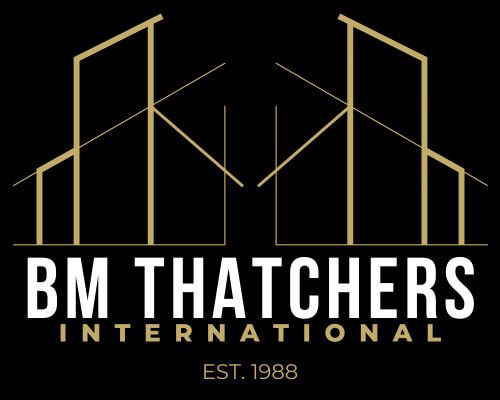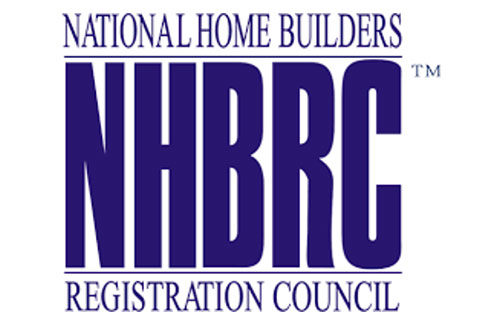Thatch roofing is nothing new to homes all over the world. It provides an excellent solution to the harshness of the South African climate with exceptional cooling and insulation properties but is also used in homes and buildings all over the world thanks to its versatility under an assortment of weather conditions. In fact, London, which has notably different weather and climate conditions to ourselves, has more thatch roof houses than any other country in Europe.
With no way to put its popularity in question, it is no surprise that there is a fairly high demand for the services of thatching specialists who can ensure their clients get the best possible use and quality out of their structures when they opt to have their roofs thatched.
So, if you have been thinking about renovating your existing roof, or are building an area that you would like to be thatched, here are a few things you need to know about them before you do.
Here we will explore what thatch roofs are, we will explore their various benefits and drawbacks, we will take a look at the most commonly used materials to make them, and will also touch on one or two concerns regarding their maintenance and upkeep.
What is Thatch Roofing?
Thatching is an age-old craft, and has been used since time immemorable as a cost-effective but powerful sheltering solution across a number of applications; whether that be for roofs and ceilings in interior spaces, or as an open shelter for outdoor entertainment areas.
These roofs are built from collections of treated, dry vegetation such as water reeds and combed wheat reeds which have been layered over each other to as to insulate it from the elements. Other materials such as straw, rushes and palm branches are often used in thatching as well, but the former two materials are the most commonly implemented.
This ensures that most of the packed vegetation in the roof stays dry even in the most adverse weather conditions, and offers the further function of trapping air inside of the structure so that temperatures can be more easily maintained.
Benefits of Thatch Roofing
There are a number of unique benefits that can be had from having thatched roofing in homes, which is why they are such a popular choice, not just all over the country, but all over the world as well.
These benefits are extensive, so let’s concentrate on the three most prominent of them; namely, insulation, cooling indoor areas, as well as their exceptional waterproofing properties:
A Uniquely Natural Sense of Style
One of the first reasons why homeowners opt to have thatched roofing installed in their home is a simple matter of aesthetics.
Thatch roofs offer a wonderfully natural style that blends modern aesthetics with a rustic twist.
Here in South Africa, this often ensures that even the most modern of homes are able to blend in with the most aesthetic properties of the surrounding environment and terrain; which is why thatching is commonly used in areas such as resorts, farms and bush-getaways.
Thatch Roofs Require Minimal Maintenance
While thatch roofs need maintenance from time to time, it is actually fairly simple to stay on top of their upkeep.
The reeds themselves will only need to be replaced once every 50 years or so, which is an extensive amount of time when one considers how frequently other roofing solutions need to be maintained.
Their roof ridges, on the other hand, should also be replaced from time to time. This will need to happen roughly every decade or so; which is also a remarkable amount of time between maintenance tasks.
This means that you will be able to enjoy your thatch in its best condition for longer amounts of time, and will be spending far less than you would on maintaining other types of roofs when opting for a thatched one.
Thatch Roofing is Well Insulated
The first benefit to thatch roofing is that it is remarkably well-insulated considering how its makeup differs to slate or tile roofing. By using only natural vegetation in their makeup, thatched roofs can contribute to an exceptionally efficient home at any time of year.
Because the thatching is laid over the roof in tightly knit layers, it keeps air locked into internal spaces. This means that it will keep cold air locked in during the hot summer months, but will also keep the heat in during winter.
For those that use cooling appliances such as air conditioners, or heaters to maintain the internal temperatures in their homes or buildings, this is great news for your utility costs.
Since air and temperatures are locked into the structure by thatch roofing your appliances will need to work with fewer resources to keep the structure’s temperatures regulated. This means that they will consume far less energy month-to-month, which will pass the savings of utility costs on to you.
Thatch Roofs Make for Cooler Interiors in Summer
As part of their insulation prowess, thatch roofs are often sources as the ideal solution for lowering temperatures for homes in, particularly hot environments; making this one of the top reasons why homes in South Africa often use them.
The way materials are put together in thatching accounts for this.
Thatch roofing contains fairly large pockets of trapped air between their layers. Air is not a very good conductor of heat, which is ideal for thatching since it means there will be less transfer of heat in homes with thatch roofs.
This means that cool interior air will stay cool, since it won’t come into direct contact with the heat outside, from where hotter temperatures can be transferred into the home.
In a climate like South African’s, where summer temperatures can soar to uncomfortable heights, this fact alone makes thatching an incredibly popular choice, particularly in areas that see a lot of suns.
Thatch Roofing is Waterproof
The exceptional waterproofing properties of thatched roofing often comes as a surprise since these roofs typically contain no conventional insulation materials.
However, simply by the ingenuity of their age-old design and structure, as well as some of the unique properties held by their collective materials, thatch roofs are remarkably effective at keeping internal areas dry; even in fairly severe weather conditions.
This is an important property for these solutions to hold since they don’t only protect internal areas from the onset of damp; the design also works to keep the thatching itself protected.
The outer layers of the thatch roof are made up of overlapping layers of vegetation, this, in turn, creates a waterproof barrier that stops water from penetrating the thatch, particularly when water reed is used as the primary material.
Because water reeds themselves are resistant to water, no damp is therefore absorbed by the thatch, which means that they won’t be damaged by the damp themselves.
Drawbacks of Thatch Roofing
Of course, with anything in life, you have to take the good with the bad and decide for yourself if the advantages outweigh the disadvantages.
While roof thatching does bring a number of unique advantages to homes and structures, they do have one or two drawbacks that need to be considered if you are to make an informed decision to renovate your roof, or when selecting thatch for a newly built structure.
With the right care and attention, however, these advantages may never become a problem for you, but it is still worth knowing what you may need to expect.
These drawbacks include the fact that thatching simply isn’t fire-proof, it may attract any number of pests, and it may even raise the costs of your home insurance.
Let’s take a closer look at these drawbacks here:
Thatch Roofing is NOT Fireproof
The most important drawback to be aware of is the fact that due to the materials used to make up roof thatching¸ these solutions don’t offer fireproof properties offered by other types of roofing, such as slate or tiles.
Thatching is made up of dried and treated vegetation, which can be sensitive to fires.
This poses an obvious danger to people and properties, particularly in areas where braais and open fires will likely take place (such as in a Lapa).
In most cases, if adequate care is taken to ensure that the thatch never burns due to a careless accident, this will never be a problem; and while it is extremely unlikely that the entire thatch will instantaneously burn up in an unfortunate situation, there is a heightened concern for safety wherever thatches and fire are in close proximity.
Thatch Roofing Can Attract Pests
Thatch roofing sometimes presents the perfect nesting ground for an assortment of pests. Typically, they attract bugs and insects more than they would the larger rodents like rats and mice.
Where bugs are concerned, this is only a disadvantage if you have a problem sharing indoor spaces with spiders, wasps and the like; but for the most part, these creatures will stay far out of reach of people up in the fibres of the thatch.
In extreme circumstances, pests might nest in the form of rodents. When this happens, they can cause damage to the thatch over time.
They will nest in the reeds and possibly even chew through plumbing or electrical cables, which will lead to a need for maintenance at a later stage.
Of course, with the right levels of vigilance and by conducting maintenance when you need to, the chance of rodents making a home in your thatch is actually fairly slim.
Thatch Roofing can Increase Insurance Costs
Particularly because of the above danger of combustion, thatched roofing can often result in raised insurance costs due to the heightened risk of a fire breaking out in the home.
Because of this, thatch roofing may not be the best option for those homes looking to keep their insurance costs down.
This is typically more the case where thatch is used on actual homes and structures that are meant to be secure, as opposed to when it is used to shelter an outdoor entertainment area such as a Lapa.
If, however, you are able to shoulder these increased premiums, thatched roofing still offers an exceptional solution for almost all types of structures.
Thatch Roof Maintenance
Even though thatched roofing offers the exceptional advantage of a minimal need for maintenance, maintenance is still a key concern regarding their condition, lifespan and overall cost to you.
So once you have had a thatching specialist install it for you, here is what you need to know about their upkeep if you are to get the most comprehensive use out of them:
The Importance of Thatch Roof Maintenance
Maintenance of any type of structure is an essential part of ensuring both its lifespan and structural integrity. Despite their highly resistive natural properties, the materials used in thatched roofing are subject to the same risks to damage as any other natural resource.
Chief of these is rot and the eventual wear of the structure itself.
While thatch roofs do last an incredibly long time, they should be inspected every few years, be compacted and have damaged reeds replaced.
Can You Handle Thatch Roof Maintenance by Yourself?
The process of inspection, replacing damaged reeds and recompacting the entire structure of thatch can be a complicated affair, and mistakes can not only make the structure ineffective but can also be dangerous to do (consider the risk of falling or causing further damage to the roof).
Because of this, it is best not to handle maintenance and repairs yourself, you should rather opt for the services of a thatching specialist instead.
Contact BM Thatchers for Details
Are you looking to have your roof converted to a thatched one? Do you need maintenance on your existing thatched roof? Be sure to get into contact with a representative from BM Thatchers today, or visit our website for additional information on our offers.



